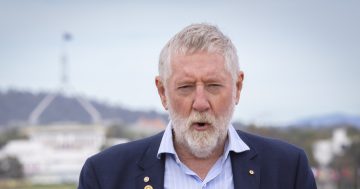
One of the most frustrating things about social media is the sense that we’re trapped inside echo chambers of our own making. It’s true, but one of the reasons we keep repeating what we believe is not because we like hearing our own opinions repeated back to us, but because we hope that by repeating the same thing over and over, we’ll eventually begin to change the opinions of those who disagree with us.
What’s difficult, though, is that because we believe so firmly that we are right, and because we feel it is so important for us not to waver in our message, we end up establishing an impenetrable wall between us and those whose minds we desperately need to change. We don’t think enough about why those who hold views we believe are reprehensible might hold those views. We too rarely stop to think that very bad opinions might be rooted in the fears and insecurities of those who hold them, or that people might hold on to bad opinions for too long because publicly admitting that you might be wrong is still viewed as a cause for embarrassment.
We desperately, desperately need to establish frameworks for better dialogues between the majority who understand that refugees and Muslim Australians are not a threat, and those who are beginning to be driven toward more extreme forms of xenophobia.
The process of IS radicalisation is beginning to be much better understood, and there are intelligent people working within our public service who are establishing smart policies to engage those who are susceptible to being radicalised and make them feel welcome within our culture. What is much less understood is the process of radicalisation that is drawing some Australians in the other direction – toward a distrust of refugees and Muslim Australians. This, too, is a form of radicalisation.
As these people – those we loosely characterise as ‘bigots’ – are drawn further away from the mainstream, they lose touch with the nuanced conversation we are having about the complex relationship between identity, religion, and extremism. At a certain point, they begin to narrow the opinions they engage with, until almost all media becomes suspect. At that point, it becomes nearly impossible to reach them, as they end up constructing their own barrier to filter out anything they don’t already agree with.
Most of us agree that bigots aren’t worth listening to, in the same way that it’s not worth taking seriously the opinions of those who have already been radicalised by IS. But we can’t just treat the growing number of xenophobic Australians as nothing more than a loony fringe, as these are the people that are, in subtle and sometimes less-than-subtle ways, drawing the vulnerable on the other side to IS and other groups that promise to protect and empower them. These two forms of radicalisation inflame one another, and every person we lose to radicalisation, on either side, acts as an enzyme in a process in which more and more of us end up slipping into extremism.
We are not doing this properly. We need to assume that all of the people that slip into radicalism are intelligent human beings, but are being caught in a loop in which extremely bad opinions are being sold to them as solutions for underlying feelings of disempowerment. We need to stop characterising anybody as a lost cause or innately prejudiced, and figure out how to begin drawing these people back.
How do we engage with those who see refugees or Muslim Australians as a threat? Ridiculing them or repeating the same facts and opinions appears to be failing very badly – it is leading some of those on the fence to see the non-xenophobic mainstream as coercive or patronising, which only draws them further away. When xenophobic opinion columnists use terms like ‘inner-city latte-sipping lefties’, the opinions of the mainstream are presented as those of a closed-off coterie, which instills in uncertain readers a sense that the non-racist mainstream does not welcome them. When the mainstream begins to label those on the verge of xenophobic radicalisation as ‘bigots’, it provides them with a sense of proof that they are unwelcome, and drives them to begin engaging seriously with the bad opinions they had begun to tentatively explore.
Once these people radicalise, we lose any of the common ground necessary for dialogue to occur. The columnists the already-radicalised read and the public figures they listen to provide them with rebuttals for any argument the non-racist mainstream can provide them to encourage them to de-radicalise. Until now, this process of xenophobic radicalisation has not resulted in the development of a well-organised framework to cause harm to others, but I can’t see how, once a critical mass of xenophobic extremists begin to gather, more sophisticated strategies won’t begin to emerge. Reclaim Australia and its offshoots are truly terrifying.
I’d like to end with an answer, but it’s so tough for me to figure this out. All I’ve realised is that the onus is on us, because only the non-radicalised can work to bring the radicalised back – it appears almost impossible for the radicalised to pull themselves back to centre. We need to engage in outreach in all directions, making sure the vulnerable and easily-manipulated can express their issues clearly, so that they can’t be convinced to reframe their frustrations by seeing another group as a scapegoat. We need to avoid treating anybody as a lost cause, especially those whose xenophobia might appear benign or just ridiculous. We all know people who could be pulled into extremism, or could already be half-way there. We need to do better at not writing them off, and making sure that we can engage with them on a level that lets them recognise that nobody is the enemy.




















